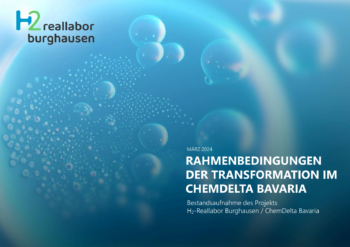Development of Instruments for a Circular Energy Economy

Chairman: Prof. Dr.-Ing. Andreas Jossen
Examiner of the dissertation:
1st Prof. Dr.-Ing. Ulrich Wagner
2nd Prof. Dr. rer. nat. Liselotte Schebek
Abstracts:
The circular economy is often proposed as a possible solution to counteract the emergence of new resource and environmental risks due to the energy transition. In addition to recycling, this includes approaches such as efficiency measures, renewable energy, sharing concepts, and second-life (SL) applications. However, the actual potential of circular approaches to reduce greenhouse gas (GHG) emissions and critical raw material demand depends on their technical feasibility, technological developments, interactions with the future energy system, and implementation barriers. Therefore, the aim of this work is to develop a methodology that enables a systematic assessment of the potential of circular approaches to reduce critical raw material demand and the climate impact of key technologies, and to apply it to the example of electric vehicle batteries.
For this purpose, the critical raw material demand and climate impact of electric vehicle batteries are first identified based on current literature to demonstrate the relevance of a detailed assessment of circular approaches for batteries. Thereupon, the technical feasibility of circular approaches is analyzed by contrasting the characteristics of traction batteries with the requirements of circular approaches. Subsequently, the selected technically feasible approaches are evaluated in terms of critical raw material and GHG emission savings. Due to the integration of electric vehicles into an increasingly complex energy system, evaluation methods are developed for this purpose that take into account both future developments and energy system effects. Finally, the implementation potential is classified by determining the economic viability of selected circular approaches for electric vehicle batteries and identifying further critical factors for the implementing actors.
This approach results in a set of tools that incorporate technological developments and interactions with the changing energy system into emissions and resource assessments. The tools developed include methods for dealing with uncertainties about future developments, methods for emissions accounting, and for coupling environmental assessment methods with battery and energy system models. Quantitative application to the selected circular approaches shows that the climate impact of battery production can be improved through energy efficiency and the use of renewable energy, as the size and type of energy supply to the production facility are important influencing factors. It is further shown that electric vehicles must be accompanied by the expansion of renewable energy and optimized charging management in order to fully exploit the benefits of electromobility in the use phase. Since SL applications do not automatically lead to critical raw material and cost savings, aging behavior, time dependencies, and displacement effects must be considered when implementing circular end-of-life concepts. Overall, if current barriers are removed and the energy and transportation sectors work more closely together, the circular economy offers potential for reducing the climate impact and critical raw material requirements for electric vehicle batteries. However, the actual impact depends heavily on interactions with the energy system and future technological developments. Therefore, when evaluating climate protection measures, such as electric vehicles, as well as the potential for savings through circular approaches, a prospective approach over the entire life cycle is absolutely necessary.

